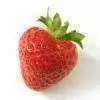-
Welcome to Celiac.com!
You have found your celiac tribe! Join us and ask questions in our forum, share your story, and connect with others.
-
Celiac.com Sponsor (A1):
Celiac.com Sponsor (A1-M):
-
Get Celiac.com Updates:Support Our Content
GAPS Diet For The Poor?
-
Get Celiac.com Updates:Support Celiac.com:
-
Celiac.com Sponsor (A17):
Celiac.com Sponsor (A17):
Celiac.com Sponsors (A17-M):
-
Recent Activity
-
- amantelchi replied to emzie's topic in Related Issues & Disorders4
Stomach hurts with movement
Your response on this matter is what I expect. You’ve had a similar episode years ago, but this one is lasting longer! -
- amantelchi replied to emzie's topic in Related Issues & Disorders4
Stomach hurts with movement
I'd like to clarify: Is the pain you describe in the area just below your chest constant, or does it only appear when you start moving? -
- Jmartes71 replied to Ginger38's topic in Related Issues & Disorders13
-




Recommended Posts
Archived
This topic is now archived and is closed to further replies.